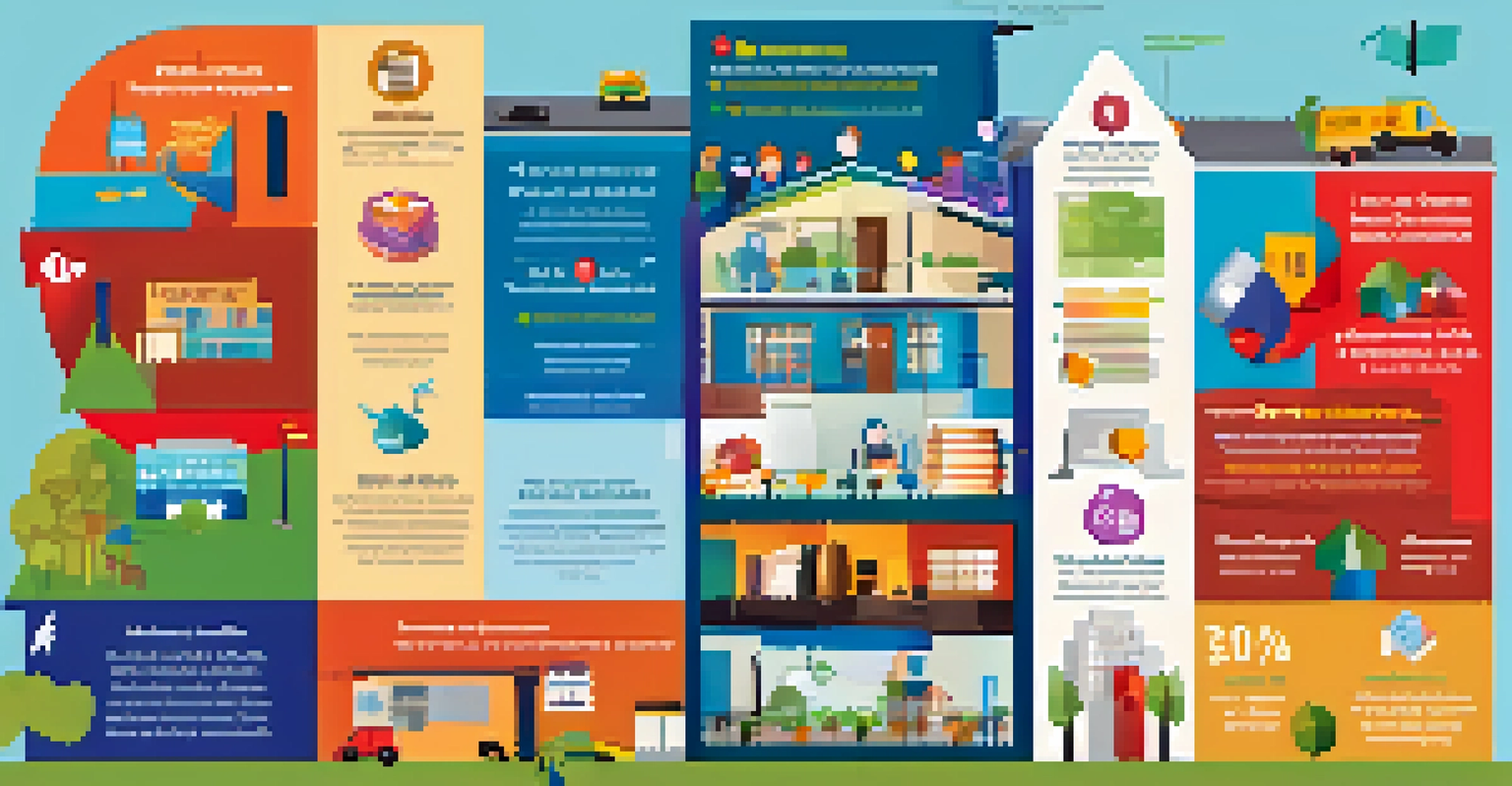Tax Credits: A Tool for Alleviating Economic Disparities

Understanding Tax Credits and Their Purpose
Tax credits are financial incentives that directly reduce the amount of tax owed by individuals or businesses. Unlike deductions, which lower taxable income, tax credits provide a dollar-for-dollar reduction in tax liability. This makes them a powerful tool for encouraging certain behaviors, such as investing in sustainable practices or supporting low-income families.
Tax credits are an essential tool for reducing poverty and promoting economic mobility.
The primary aim of tax credits is to alleviate the financial burden on specific groups, particularly those facing economic challenges. By targeting low-income households, tax credits can help lift families out of poverty or prevent them from falling deeper into financial hardship. This financial relief often translates into improved access to essential services like education and healthcare.
Moreover, tax credits can stimulate economic growth by increasing disposable income. When families have more money to spend, they contribute to local economies, supporting businesses and creating jobs. In this way, tax credits serve not only as a safety net but also as a catalyst for broader economic activity.
Types of Tax Credits and Their Impact
There are various types of tax credits, each designed to address specific needs or encourage particular behaviors. For instance, the Earned Income Tax Credit (EITC) provides substantial benefits to low-income earners, effectively boosting their annual income. Similarly, child tax credits offer financial relief to families, making it easier to raise children in a stable environment.

Another notable example is the American Opportunity Tax Credit, which helps students cover the costs of higher education. By easing the financial burden of tuition and fees, this credit encourages more individuals to pursue degrees, thus enhancing their long-term earning potential. Each of these credits targets unique challenges faced by different segments of the population.
Tax Credits Reduce Financial Burden
Tax credits directly lower the amount of tax owed, providing essential financial relief to individuals and families facing economic challenges.
The impact of these credits is significant and often measurable. Studies have shown that tax credits can reduce poverty rates and improve overall quality of life for families. Additionally, the increased spending power can lead to local economic revitalization, showcasing the broader societal benefits of well-structured tax credit programs.
Challenges in Accessing Tax Credits
Despite their potential benefits, many eligible individuals and families fail to claim tax credits. This often stems from a lack of awareness about available credits or the complexities involved in the application process. For instance, the EITC has a notoriously low participation rate, with millions of eligible taxpayers missing out on this vital financial support.
The best way to help the poor is not to give them money, but to help them earn it.
Additionally, the intricacies of tax legislation can be intimidating. Many individuals might not seek help or guidance due to fear of the unknown, leading to underutilization of the credits designed to assist them. It’s crucial that outreach efforts simplify the process and provide clear information on how to access these benefits.
Organizations and governments are increasingly working to bridge this gap by offering resources and assistance to help individuals navigate tax credits. By fostering a more inclusive environment, they can empower more people to take advantage of these opportunities, ultimately reducing economic disparities.
The Role of Education in Utilizing Tax Credits
Education plays a pivotal role in ensuring that individuals understand and can effectively utilize tax credits. By providing clear, accessible information through workshops and community programs, organizations can demystify the tax filing process. This empowerment can lead to greater awareness and, consequently, higher participation rates in tax credit programs.
Furthermore, educating tax professionals about the nuances of various credits can enhance their ability to assist clients. When tax preparers are well-versed in available credits, they can ensure that clients maximize their benefits. This ripple effect can significantly impact the financial well-being of entire communities.
Education Boosts Tax Credit Awareness
Improving education about tax credits can empower individuals to effectively utilize these benefits, increasing participation rates and promoting economic equity.
Ultimately, informed citizens are more likely to take advantage of tax credits, thereby bridging economic gaps. As knowledge grows, so does the potential for these credits to create lasting change in individuals' lives and the economy as a whole.
Tax Credits vs. Other Economic Relief Programs
Tax credits are just one of many tools available for alleviating economic disparities, but they hold unique advantages over other forms of assistance. Unlike direct cash transfers or welfare programs, tax credits incentivize positive behaviors, such as workforce participation or education. This approach not only provides immediate relief but also encourages long-term self-sufficiency.
Moreover, tax credits can be more palatable to taxpayers as they are often perceived as a more equitable form of assistance. They can stimulate economic activity without the stigma sometimes associated with welfare programs. This can foster a more supportive environment for policies aimed at reducing economic inequality.
However, it's essential to recognize that tax credits should complement, not replace, other forms of economic support. A holistic approach that includes both tax credits and direct assistance is likely to yield the best outcomes in addressing economic disparities.
The Future of Tax Credits in Economic Policy
As discussions around economic inequality grow more urgent, the role of tax credits in policy-making is becoming increasingly relevant. Policymakers are exploring how to enhance existing credits and introduce new ones to better meet the needs of underserved populations. This evolution reflects a growing recognition of the importance of targeted financial support in tackling economic disparities.
One potential area for reform is expanding eligibility criteria for existing credits, allowing more individuals to benefit from these programs. Additionally, lawmakers may consider increasing the value of credits to provide even greater financial relief. Such changes could significantly impact poverty rates and support families working toward economic stability.
Tax Credits Drive Economic Growth
By increasing disposable income, tax credits stimulate local economies and create jobs, showcasing their broader societal benefits beyond individual support.
The future of tax credits lies in their ability to adapt and respond to the changing economic landscape. By continually reassessing their effectiveness and inclusivity, tax credits can remain a vital tool in the fight against economic disparities, ensuring that progress is not just a privilege for a few but a possibility for all.
Conclusion: Harnessing Tax Credits for Economic Equity
In conclusion, tax credits represent a powerful mechanism for alleviating economic disparities. By providing targeted financial support to those who need it most, they can help lift families out of poverty and encourage economic participation. As we continue to navigate the complexities of economic inequality, understanding and utilizing tax credits will be crucial.
It’s essential for communities, organizations, and policymakers to work together to ensure that tax credits are accessible and effective. By promoting awareness and simplifying the application process, we can empower more individuals to take advantage of these benefits. This collaborative effort can lead to a more equitable society where everyone has the opportunity to thrive.

Ultimately, the potential of tax credits extends beyond individual families; they can drive community growth and foster a more balanced economy. As we harness the power of these credits, we take meaningful steps toward a fairer future for all.